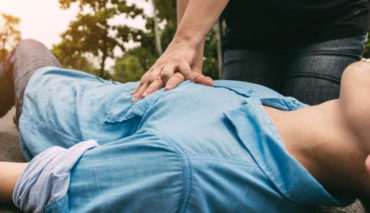Why women are more at risk of sudden cardiac death
Cardiovascular disease is the leading cause of death in women.
Here in Australia, heart disease kills more than two times as many women as breast cancer – yet the specific risk factors for women are poorly understood.
Not only by women, but also by health professionals in a position to help women recognise risks and symptoms.
Why is this?
Women and men are different
When it comes to cardiac risk and symptoms of heart problems, women and men are different.
For example, estrogen helps protect women from cardiovascular disease. As women experience menopause, cardiac risk increases significantly.
This is why heart failure typically occurs at an older age in women compared to men.
Symptoms of an impending cardiac event, such as heart attack or sudden cardiac arrest, also differ between men and women.
For example, signs of impending heart failure in men include chest pain, shortness of breath, and nausea.
In women, the signs are far more numerous, and include more generalised symptoms such as dizziness, fatigue, light-headedness, and back, neck or jaw tightness. On top of that, women are less likely to experience chest pain than men when at-risk of acute myocardial infarction (AMI).
These factors contribute to the increased likelihood for heart disease to be misdiagnosed in women.
They also explain why women are more likely to present with a broader range of symptoms, which can be mistaken for other maladies by health professionals.
Lower chances of resuscitation
This is likely to be a contributor to the fact that women are less likely than men to receive help, be resuscitated, and survive out-of-hospital cardiac arrest.
This study demonstrated that women are less often resuscitated by bystanders than men – and when resuscitation is attempted, women have lower survival rates at each successive stage of care.
One reason women are less likely to receive help from bystanders – and by extension, why women are more at risk of sudden cardiac death – comes down to social conventions: we don’t want to take the patient’s clothes off in public.
This is less surprising when you consider that the majority of CPR training manikins are all flat-chested – even the ones purported to represent women.
RELATED ARTICLE: Seven reasons why AEDs aren’t used
Addressing the problem
The combination of these gender-specific biological and societal risk factors presents a range of issues for women. So much so that specific organisations, such as the Lancet women and cardiovascular disease Commission, exist to address the problem.
At the heart of efforts to address this situation, is education.
Not only of women at risk of cardiovascular disease, but also among health professionals who are in a position to help prevent catastrophic cardiac events in women.



